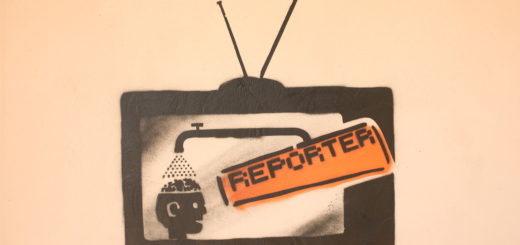THE MYSTERY OF D.B. COOPER
Coverage of the Nashville Film Festival, by Jason T Sparks
Here’s what we know: on the Wednesday before Thanksgiving in 1971, a nondescript, middle-aged man in a dark suit boarded Northwest Orient Airlines flight 305 from Portland to Seattle. Once the plane was taking off, he passed a note to a stewardess. She read the note, notified the cockpit about its contents, and then, at the author’s request, took a seat next to the passenger in question. He claimed to have a bomb on board, and to validate his claim, showed the stewardess his briefcase—and the assemblage of dynamite, wires, and electrician’s tape therein.
Per his instructions, the plane flew to Seattle as expected, and the passengers—except for him—were removed from the plane at all speed, learning only after they were on the ground what was going on. Because the bomb was perceived as a very real threat, the man’s demands were met: the plane was fully fueled, and he, the passenger, was given several parachutes and $200,000 in cash. Per his demand, the plane took off again, ostensibly headed for Mexico. Ultimately the plane returned to Seattle, because it soon became evident to the flight crew that the passenger—by this point utterly alone in the cabin—was no longer on board. He had donned one of the parachutes, grabbed the money, forced open an emergency exit, and jumped…somewhere over the Pacific Northwest. He was never seen or heard from again, never found. The only other thing anyone knew was the name he had given, which was Dan Cooper, later changed by a mistaken journalist to DB Cooper. His case remains the only incident of “skyjacking” that the FBI has ever failed to solve.
All that—all of the known elements of the story—are the jumping-off point (too soon?) for a story that has become quintessential American mythology, told, re-told, picked apart, and endlessly debated. That story is the story examined in John Dower’s The Mystery of D.B. Cooper, a film that is very accurately named; while it is about D.B. Cooper, and you’ll learn about DB Cooper as you watch, the film is really about” The Mystery” of D.B. Cooper, and the people whose lives are still impacted by it to this day.
Mystery chooses to focus on four individuals who remain among the prime suspects in the case, and their adherents—meaning the people who insist that their suspect is the D.B. Cooper, full stop. Dower could have easily smirked at the adherents, presented them with a disaffected, get-a-load-of-this-guy tone, but he doesn’t. Instead, with each suspect, he uses archival footage, interviews, and staged recreations of the flight to help support and outline each adherent’s claim, which leads to a frustrating and fascinating result—they all seem equally believable. My reaction to each story was, “well, obviously, that is the real deal on D.B. Cooper.” Instead of watching the subjects of the film and thinking, “wow, what tinfoil-hat whackadoodles,” I found myself agreeing with everyone interviewed—I became a tinfoil-hat whackadoodle–at least during this film.
The first suspect discussed at length is one Duane Weber, whom we meet via his ex-wife Jo Weber, and via Tim Collins, who serves now as Jo’s “memory man,” a longtime neighbor who has committed himself to helping the aged, frail Mrs Weber retain her rapidly-failing memory. In multiple scenes, Jo will start a sentence, and Tim will, out of necessity, finish it, which (1) serves to humanize this woman we might otherwise be tempted to write off as a kook (2) is a great example of something Dower encountered throughout shooting the film—an unexpected variable showing up (a common risk in documentary). Duane, according to Jo, had seemed like a perfectly normal husband until 1995. Duane died in 1995, but not before pulling Jo close to him to issue a deathbed confession: “I am Dan Cooper.” At the moment of the revelation, we learn, Jo isn’t completely shocked; she doesn’t know who Dan Cooper is. She recounts how she learned Cooper’s story, and how fragments of Duane’s life suddenly take on new context—especially a trip he took to a remote area near Washington’s Columbia River in 1979. Four months after Duane’s trip, there is finally some semblance of a break in the case; some of the cash Cooper took is found—in that same remote area near the Columbia River. Clearly, you find yourself thinking as you view, Duane Weber was D.B. Cooper.
We then meet a suspect named Barbara Dayton, through anecdotes being told by two of Dayton’s friends; their storytelling style is natural and conversational—we see them sitting on a couch in their living room as they recount the story. In the early Seventies, they live near Thun field, a small airfield in Washington, where Barbara—an ace pilot, but otherwise a loner—spends a lot of time. The couple starts to notice odd things: Dayton flies into a rage whenever she reads newspaper articles critical of Cooper, and that a Polaroid they take of Dayton looks remarkably like the famous police sketch of Cooper. Of course, it seems like Barbara Dayton could be ruled out as a subject, by virtue of being, you know, Barbara Dayton, until the storytellers reveal a few more details. Like the name of the first person in Washington state to receive a sex-change operation: Robert Dayton. Like when the operation occurred: shortly after Cooper’s jump. Like the amount of money it would take to pay for such a procedure in 1971: $200,000. Like the response Barbara gave when confronted with the Polaroid: “Yes, fine, I am D.B. Cooper.” Clearly, you find yourself thinking as you view, Barbara ne`Robert Dayton was D.B. Cooper.
We then meet Marla Cooper, an attractive older Gen-Xer, who was eight years old in 1971, which was also the last year she ever saw her uncle, Lynn Doyle Cooper, or, as he was usually called, L.D. Cooper—the third suspect profiled. In a segment leaning heavily (but effectively) on recreations, we learn that Marla tried, unsuccessfully, to follow her uncle and father into the woods behind her house one afternoon in 1971; they kept eluding her, saying only that they were going on a “turkey hunt”. The next time she sees uncle L.D. it’s Thanksgiving Day, and her uncle, covered in blood and half awake, is being helped out of a car by her father. Her father tells her to never mention to anyone what she’s seeing, and another uncle—not L.D., as he’s in no condition to speak—is overheard saying, “we did it…we hijacked the plane.” It’s the last time she ever sees uncle L.D., and the family never mentions him again, according to Marla. Clearly, you find yourself thinking as you view, L.D. Cooper was D.B. Cooper.
There is one more suspect profiled in the film, a Richard McCoy, who we learn has a distinct advantage over the others—he is, or rather was, a convicted skyjacker, having perpetrated a nearly-identical crime the next year. For that skyjacking, he was convicted and sentenced to federal prison in the notoriously tough Lewisburg penitentiary, only to escape two years later and die in a shootout with FBI agents. During McCoy’s story, the unexpected takes over the narrative again, as Dower has to devote a considerable piece of screen time to finding one Bernie Rhodes, and then he devotes some more screen time to trying to convince Rhodes to talk to him. Rhodes, it seems, was Richard McCoy’s sentencing officer after the 1972 incident, and he has never accepted any interview requests about the matter. He finally does talk to Dower, recounting in great detail his main interview with McCoy, who was aloof about similarities between his case and Cooper’s—and would look at the police sketch of Cooper, but would never touch it. Clearly, you find yourself thinking as you view, Richard McCoy was DB Cooper…and so was L.D. Cooper…and so was Barbara ne` Robert Dayton…and Duane Weber was D.B. Cooper…too…wait, what?
By the end of the film, you, the viewer, find yourself enmeshed in the Cooper story, lost in it, and that’s more or less Dower’s point: because so much of the story remains unsolved, it tends to consume people. Early in the film, he hints at this, in a way, by discussing the cult appeal Cooper had as early as 1971: the economy was in bad shape in ’71, especially in (of all places) Seattle, where (of all possible employers) Boeing had just laid off 70,000 workers. In an environment like that, someone who rips off a part of the aeronautics industry and gets away with it is in a prime position to become a folk hero; Cooper did just that, and remains one to this day, as evinced by the number of bars in rural Washington that hold annual DB Cooper festivals to this day, hoping that the man himself will show up. The patrons of those bars, and the interviewees in this film, all seem to have what another interviewee (himself an author who focuses on Cooper) describes as “A D.B. Cooper-shaped hole in their lives”. Dower shows us how his subjects have filled that hole, and in the process, creates—and fills—such a hole in the viewer.
Update: Film is currently streaming on HBO Max






















